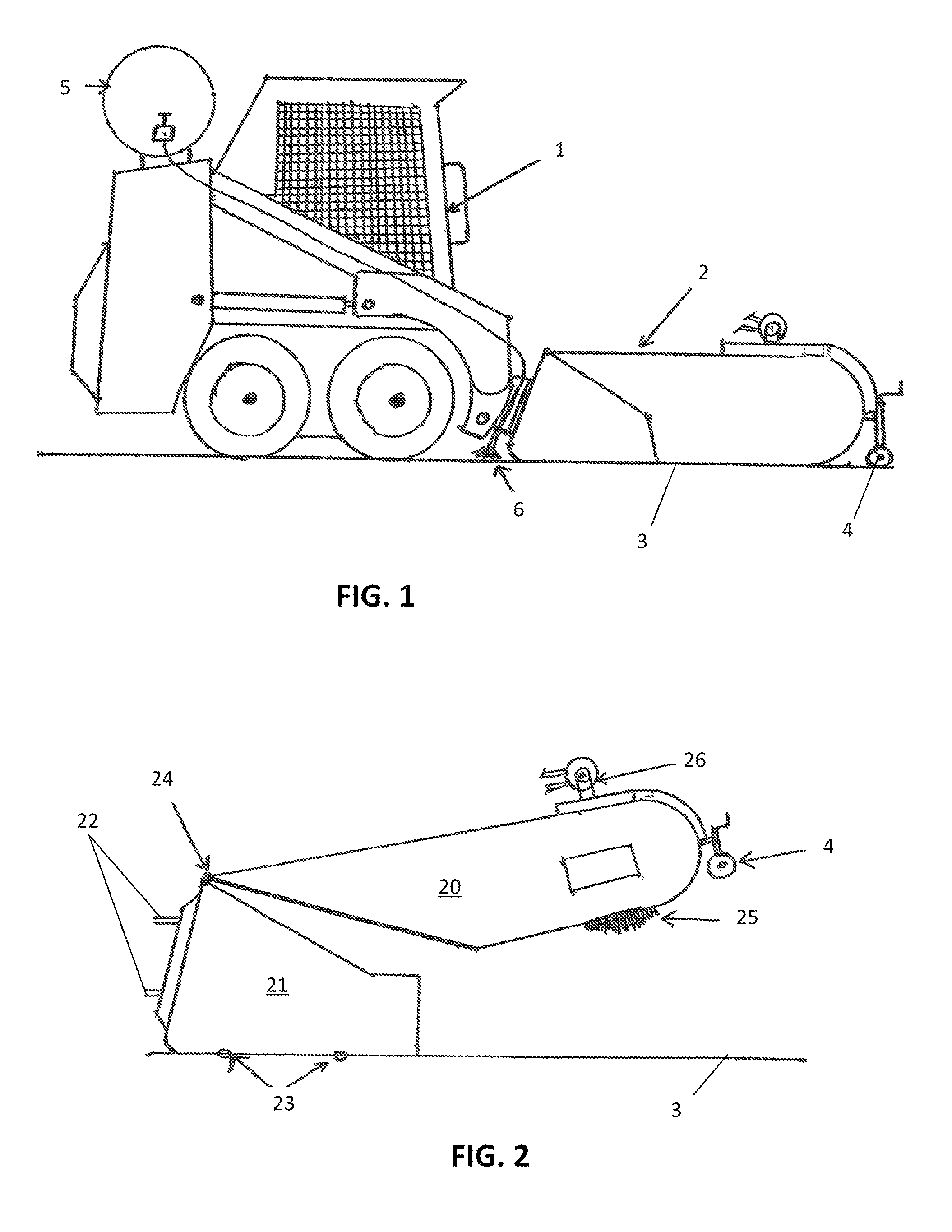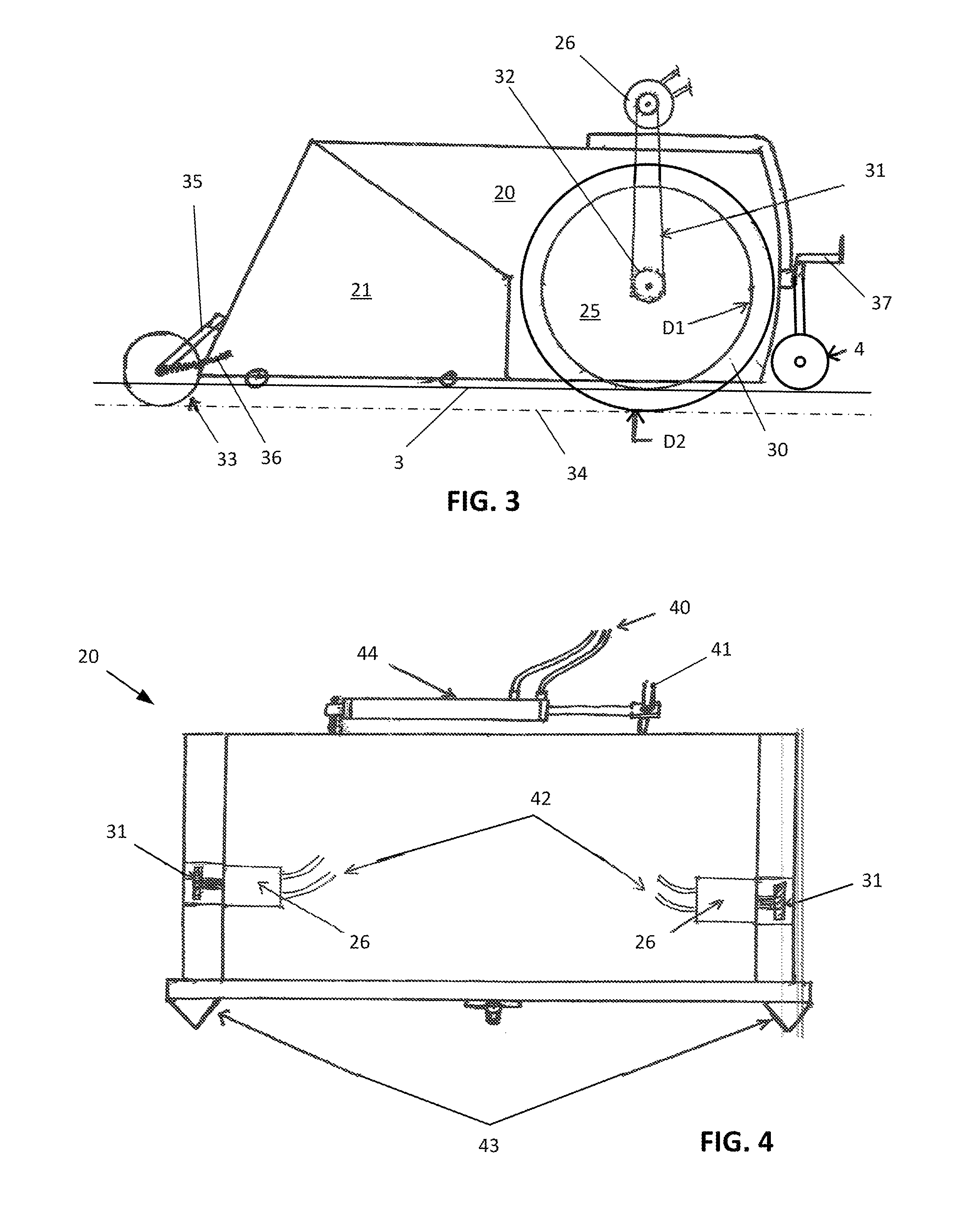Vehicle powered sweeper/edger device
- Summary
- Abstract
- Description
- Claims
- Application Information
AI Technical Summary
Benefits of technology
Problems solved by technology
Method used
Image
Examples
Embodiment Construction
[0020]The basic hydraulically-powered sidewalk sweeper is a device composed of two articulating housings. The rear housing is mounted to the power unit and is used to collect the grass and debris thrown from the front housing's brushes. The front housing contains the sweeping and cutting brushes and is designed to “float” independent of the rear housing. These housings operate in such a fashion that when the unit is lowered to the sidewalk, the brushes sweep dirt and debris back into the rear area where it will be dumped when full into a truck or to a designated site.
[0021]Referring now to the drawings, in which like reference numerals refer to like parts in the various figures, FIG. 1 is a side view of the invention, a modification of the aforementioned basic sweeper, being pushed by a power unit. The power unit 1 shown here is a Bobcat G series skid steer loader or equivalent. It is shown pushing the preferred embodiment of the invention, a sweeper / edger device 2, along a sidewalk...
PUM
 Login to View More
Login to View More Abstract
Description
Claims
Application Information
 Login to View More
Login to View More - R&D
- Intellectual Property
- Life Sciences
- Materials
- Tech Scout
- Unparalleled Data Quality
- Higher Quality Content
- 60% Fewer Hallucinations
Browse by: Latest US Patents, China's latest patents, Technical Efficacy Thesaurus, Application Domain, Technology Topic, Popular Technical Reports.
© 2025 PatSnap. All rights reserved.Legal|Privacy policy|Modern Slavery Act Transparency Statement|Sitemap|About US| Contact US: help@patsnap.com



